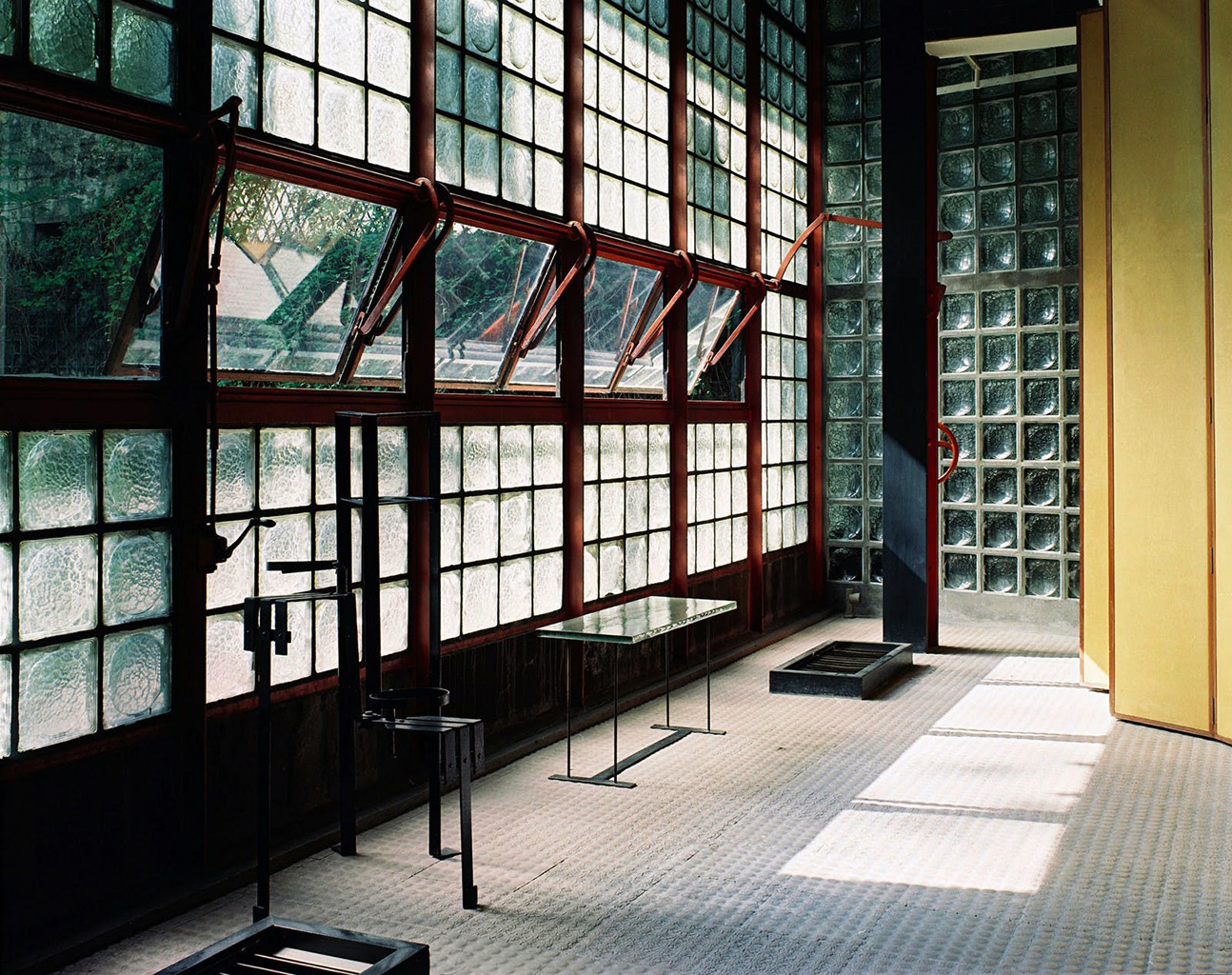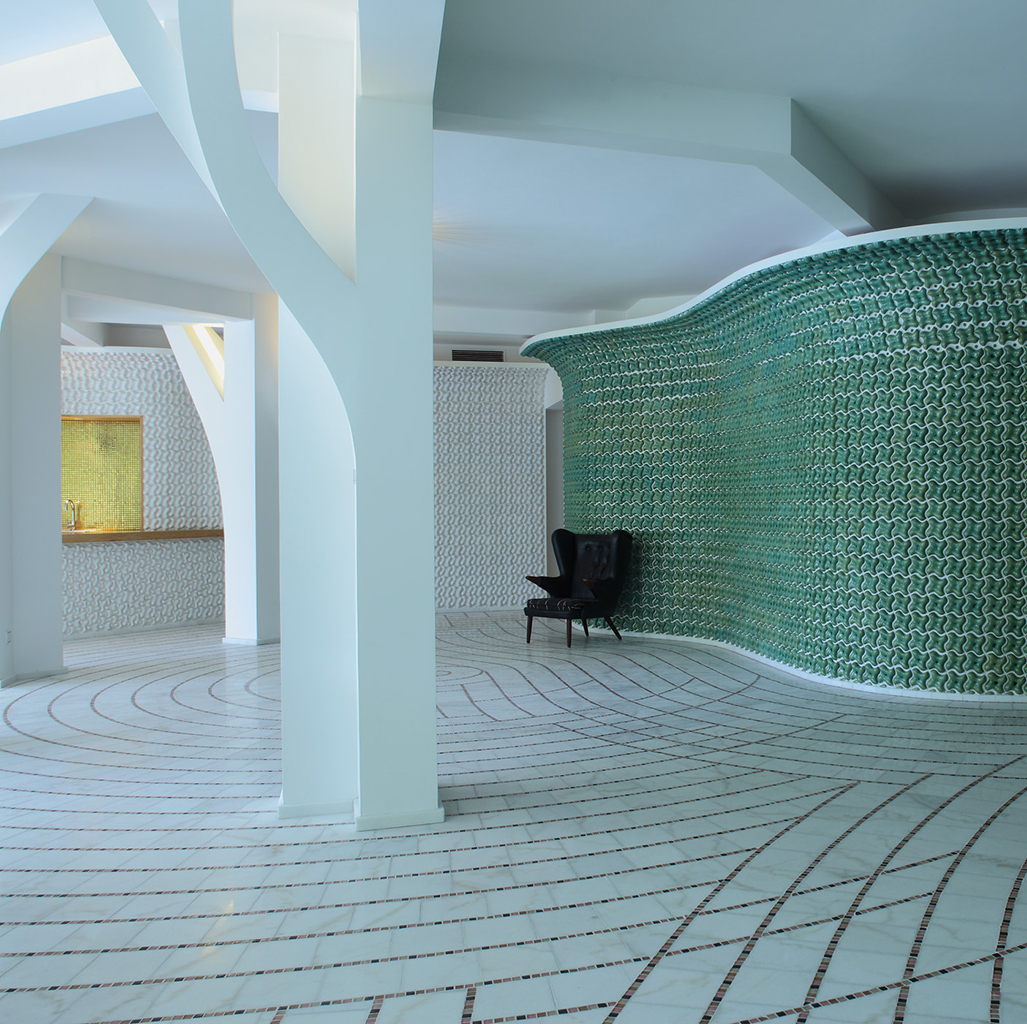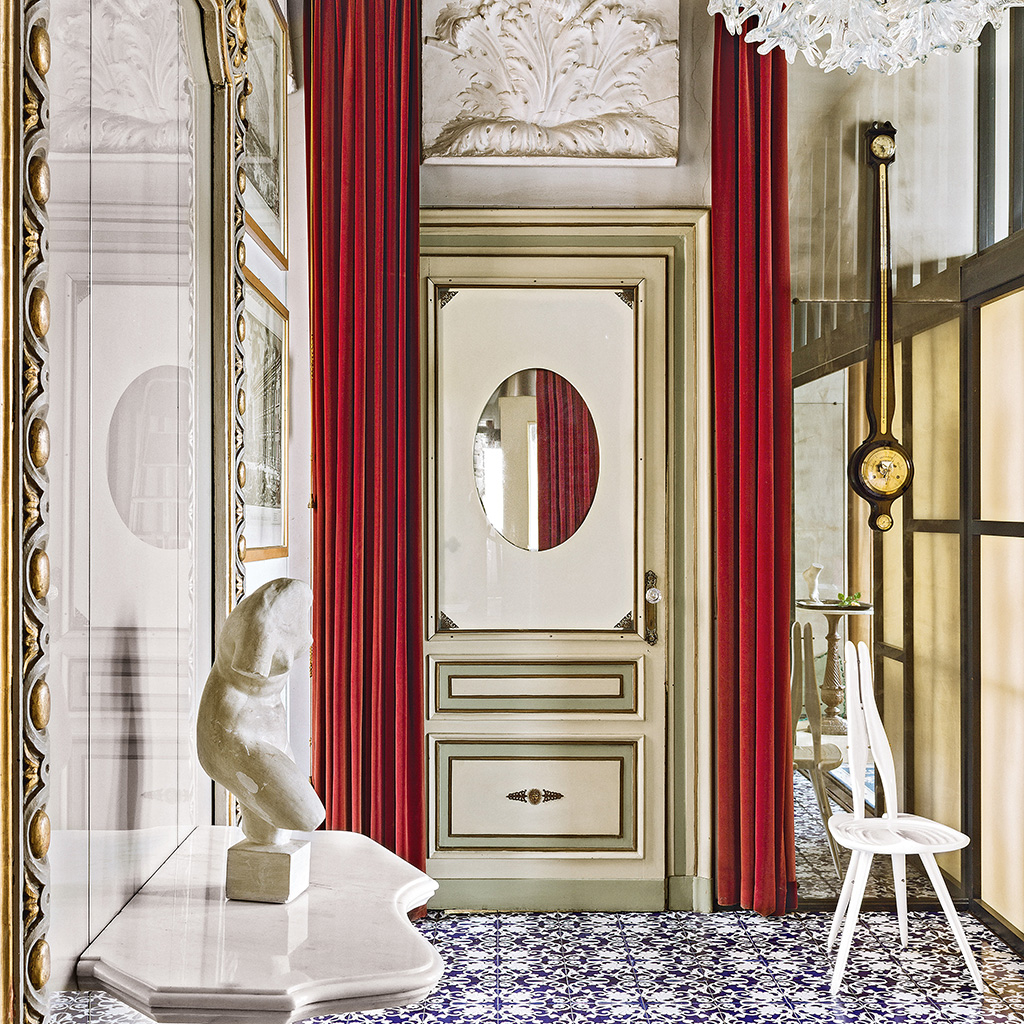House for an Industrialist, Shenzhen, 2009. This interior renovation of a 700 m² villa embodies new ideas about craft, geometry, and ornament. Installations on the ceilings, floors, and walls are built up of custom-fabricated repetitive elements: sculptural ceramic tiles, anodized aluminum branches, lacquered hardwood spindles, marble floor tiles, woven rattan panels… hundreds of these elements are arranged in non-repetitive patterns. The visitor's experience unfolds musically as he or she explores the space. One theme that emerges is the dome: from the entry vestibule to the most private spaces, various types of domes are encountered. One goal of the project was to demonstrate the high skill level of Chinese craftspeople.





